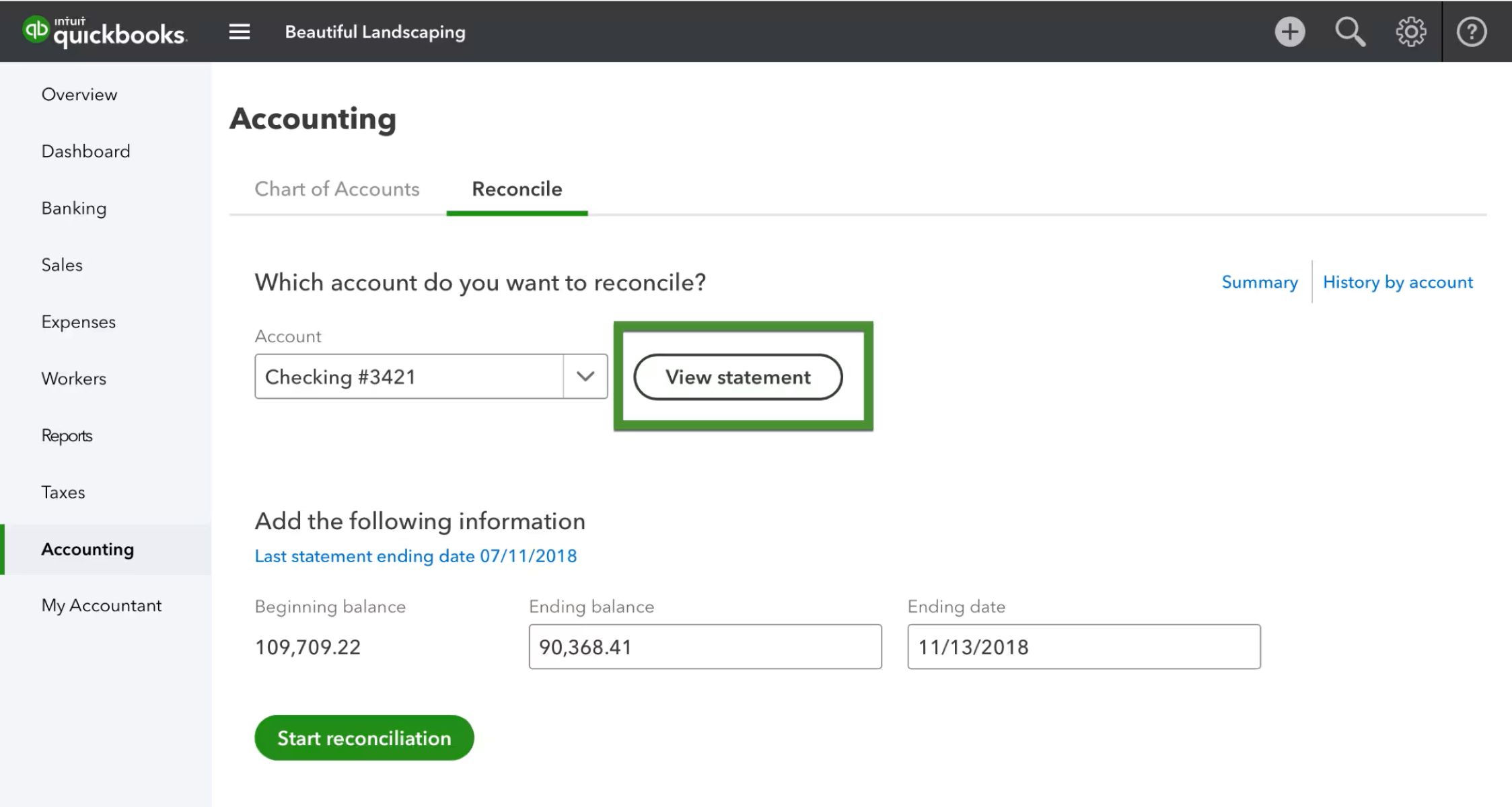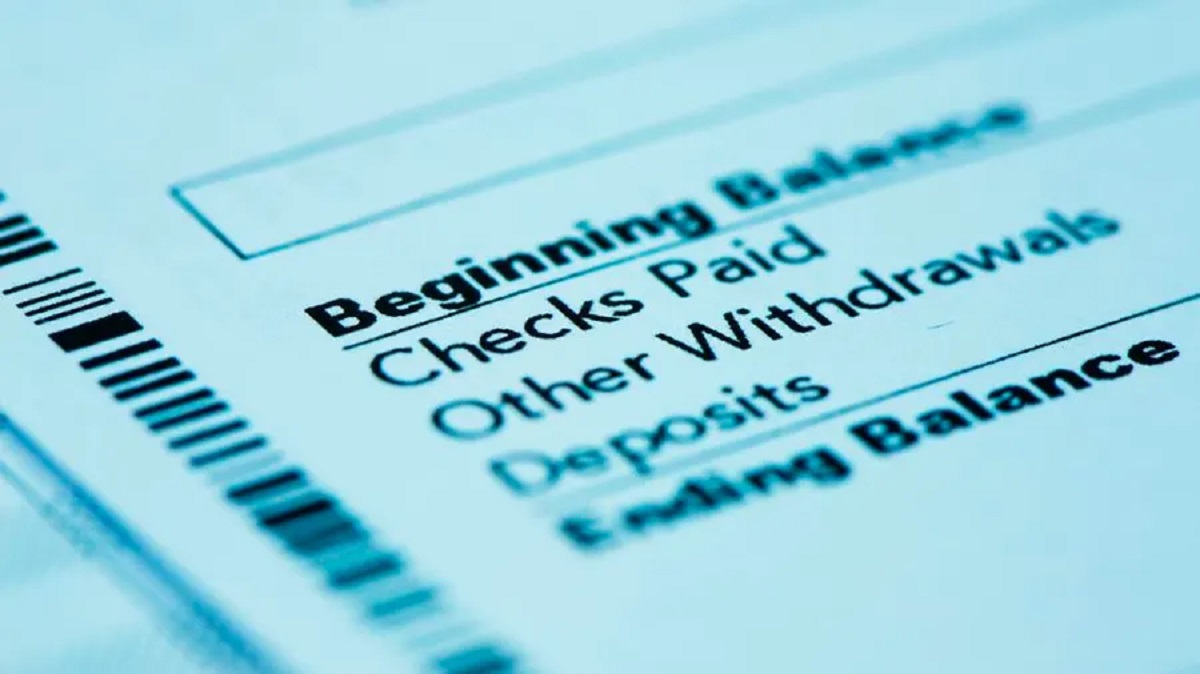Introduction
As you enter the world of banking, you will come across various terms and processes that are crucial to understanding how the financial system works. One such term is “transaction.” Transactions form the backbone of banking activities, shaping the way individuals and businesses manage their finances. Understanding what a transaction is and its different types is essential for anyone looking to navigate the banking landscape.
A transaction in banking refers to the exchange of funds or financial assets between two parties. It encompasses a wide range of activities, from depositing money into a checking account to making bill payments and transferring funds between accounts. Transactions allow individuals and businesses to carry out monetary operations efficiently, ensuring that their financial needs are met.
Banking transactions can be classified into various types, each serving a specific purpose and catering to different financial needs. By categorizing transactions, banks can streamline their operations and offer specialized services to their customers. Understanding the different types of transactions can help individuals and businesses make informed decisions about their financial activities.
In this article, we will explore the different types of transactions in banking and the importance they hold in the overall banking system. By gaining insight into the world of transactions, you will be better equipped to handle your financial affairs and make the most of the services provided by banks.
Definition of Transaction
A transaction in the realm of banking refers to any financial activity that involves the transfer of funds or financial assets between two parties. It serves as a means of conducting business and managing financial affairs efficiently. Transactions can take place in various forms, ranging from simple actions like depositing money into a bank account to more complex operations such as loan disbursements and bill payments.
At its core, a transaction involves the exchange of value. This value can be represented by money, financial assets, or even non-monetary items of worth. Transactions are conducted using different mediums, including cash, checks, electronic transfers, and online payments. The underlying objective of a transaction is to facilitate the movement of funds from one party to another, ensuring that financial obligations are met and resources are allocated as intended.
Transactions play a vital role in the banking sector as they enable individuals and businesses to manage their finances effectively. Through transactions, individuals can deposit their earnings into bank accounts, withdraw cash when needed, transfer funds to other accounts, and make payments for goods and services. Businesses, on the other hand, rely on transactions to receive payments from customers, perform payroll functions, settle bills, and make investments.
Transactions are the building blocks of financial systems and are governed by a set of rules and regulations to ensure transparency, security, and accountability. Banking institutions implement robust systems and protocols to process transactions efficiently and prevent fraudulent activities.
Overall, transactions are the backbone of banking operations, offering individuals and businesses the ability to manage their finances seamlessly. By understanding the definition and significance of transactions in banking, you can navigate the financial landscape with confidence and make informed decisions about your monetary activities.
Types of Transactions in Banking
Transactions in banking can be categorized into various types, each serving a specific purpose and catering to different financial needs. Understanding these different types of transactions can help individuals and businesses make informed decisions and effectively manage their finances. Here are some of the common types of transactions in banking:
- Deposit Transactions: Deposit transactions involve adding funds to a bank account. This can be done through various channels, such as cash deposits at the bank branch, check deposits, or electronic transfers. Deposit transactions are essential for individuals to safely store their money, earn interest, and have easy access to their funds when needed.
- Withdrawal Transactions: Withdrawal transactions refer to the process of taking money out of a bank account. This can be done through ATM withdrawals, over-the-counter cash withdrawals at the bank branch, or electronic transfers. Withdrawal transactions allow individuals to access their funds for daily expenses or any other financial needs.
- Transfer Transactions: Transfer transactions involve moving funds from one bank account to another. This can be within the same bank or between different banks. Transfer transactions are useful for various purposes, such as transferring money to a family member or friend, paying bills, or moving funds between personal and business accounts.
- Bill Payment Transactions: Bill payment transactions allow individuals and businesses to settle their bills conveniently. Banks provide online platforms or mobile applications where customers can enter their bill details and make payments directly from their bank accounts. This saves time and effort for paying utilities, credit card bills, loans, and other recurring expenses.
- Loan Transactions: Loan transactions involve borrowing money from a bank or financial institution. This can be in the form of personal loans, car loans, mortgage loans, or business loans. Loan transactions involve a thorough evaluation of the borrower’s creditworthiness, repayment terms, and interest rates. Loans are crucial for individuals and businesses to fund their financial goals and investments.
These are just some of the common types of transactions in banking. Banks also offer specialized services like foreign currency exchange, investment transactions, and credit card transactions. By understanding the different types of transactions, individuals and businesses can effectively utilize banking services to meet their financial needs and goals.
Deposit Transactions
Deposit transactions are a fundamental component of banking activities, allowing individuals and businesses to add funds to their bank accounts. Depositing money into a bank account offers several advantages, including safekeeping of funds, earning interest on deposits, and easy access to funds for daily transactions. There are various methods through which deposit transactions can be carried out:
- Cash Deposits: Cash deposits involve physically visiting a bank branch and depositing money into the desired account. The depositor fills out a deposit slip with the account number and amount to be deposited, and hands it over to the bank teller along with the cash. The teller verifies the deposit slip and counts the cash before crediting the funds to the account.
- Check Deposits: Check deposits are another common method of depositing money into a bank account. The account holder writes a check payable to themselves and fills out the deposit slip with the account number and amount. The check, along with the deposit slip, is then submitted to the bank via a teller or an ATM machine. The bank verifies the check, confirms the funds’ availability, and credits the amount to the account.
- Electronic Transfers: With the advancement of technology, electronic transfers have become increasingly popular for deposit transactions. This method allows individuals to transfer funds from other bank accounts or financial institutions directly into their desired account. Electronic transfers can be initiated through online banking platforms, mobile banking apps, or through third-party payment providers.
Deposit transactions are essential for individuals to build a financial foundation and have a secure place to store their money. Deposited funds can be accessed through various channels, such as ATM withdrawals, writing checks, or electronic transfers. Additionally, depositing money into a bank account often comes with the opportunity to earn interest on the deposited amount, allowing individuals to grow their savings over time.
For businesses, deposit transactions play a critical role in managing cash flow and ensuring the smooth operation of daily financial activities. Businesses can receive payments from customers via cash, checks, or electronic transfers, and deposit these funds into their business accounts. This enables businesses to track income, pay suppliers, and cover expenses efficiently.
In summary, deposit transactions provide individuals and businesses with a secure way to store and access their funds. Whether through cash deposits, check deposits, or electronic transfers, depositing money into a bank account is an essential banking activity that facilitates financial management and growth.
Withdrawal Transactions
Withdrawal transactions are an essential part of banking that allows individuals and businesses to access funds from their bank accounts. These transactions enable account holders to retrieve cash or transfer funds to another account as per their financial needs. Here are the common methods for conducting withdrawal transactions:
- ATM Withdrawals: Automated Teller Machines (ATMs) provide a convenient way for individuals to withdraw cash. Account holders can insert their ATM card, enter their PIN (Personal Identification Number), and select the desired withdrawal amount. The ATM dispenses the requested cash, and the transaction is debited from the account balance. ATM withdrawals can be accessed at various locations, providing 24/7 access to cash.
- Over-the-Counter Withdrawals: Over-the-counter cash withdrawals are conducted at bank branches by visiting a teller. Account holders need to present valid identification and complete a withdrawal slip specifying the withdrawal amount. The teller verifies the account details and hands over the requested cash after debiting the transaction from the account balance.
- Electronic Transfers: Withdrawal transactions can also involve transferring funds from one bank account to another. Account holders can initiate electronic transfers through online banking platforms or mobile banking apps. This method allows individuals to transfer funds to other accounts or make payments directly to a recipient’s bank account.
Withdrawal transactions empower individuals to access their funds conveniently and fulfill their financial obligations. Cash withdrawals are particularly useful for day-to-day expenses, such as shopping, paying bills, or withdrawing money for emergencies. Electronic transfers provide flexibility by allowing individuals to move funds between their own accounts or make payments to vendors, service providers, or friends and family.
For businesses, withdrawal transactions play a crucial role in managing cash flow and meeting financial obligations. Through over-the-counter or electronic transfers, businesses can withdraw funds to pay suppliers, cover operational expenses, or facilitate employee salaries.
It is important to note that withdrawal transactions may have certain limitations depending on the type of account and banking policies. These limitations can include daily withdrawal limits, fees for exceeding transaction limits, or transaction processing time. Account holders should familiarize themselves with these terms and conditions to make informed decisions regarding their withdrawal transactions.
In summary, withdrawal transactions provide account holders with the flexibility to access their funds when needed. Whether through ATMs, over-the-counter withdrawals, or electronic transfers, these transactions empower individuals and businesses to manage their financial obligations efficiently.
Transfer Transactions
Transfer transactions are a key feature of banking that enable the movement of funds from one bank account to another. These transactions play a crucial role in facilitating financial transactions and managing personal and business finances. Let’s explore the different methods and purposes of transfer transactions:
- Internal Transfers: Internal transfers refer to moving funds between accounts within the same bank or financial institution. These transfers can be done online through the bank’s website or mobile banking app. Internal transfers are useful when individuals or businesses need to allocate funds between their checking, savings, or investment accounts.
- External Transfers: External transfers involve moving funds between different banks or financial institutions. Account holders can initiate external transfers through online banking platforms or mobile banking apps. This method allows individuals to send money to family members, friends, or business associates who have accounts at different banks. External transfers may take a longer processing time compared to internal transfers.
- Wire Transfers: Wire transfers are a specialized form of transfer transaction that involves the movement of funds electronically between banks, often across borders. Wire transfers are typically used for larger transactions and can be initiated at a bank branch or through online banking platforms. Wire transfers are commonly used for international business transactions or when immediate clearance is required.
- Peer-to-Peer (P2P) Transfers: Peer-to-peer transfers, often referred to as P2P transfers, enable individuals to send money directly to others using digital platforms or mobile apps. These transfers bypass traditional banking channels and allow for quick and convenient transactions. P2P transfers are commonly used for splitting bills, paying rent to roommates, or reimbursing friends for shared expenses.
Transfer transactions serve various purposes, ranging from personal financial management to business operations. They allow for seamless movement of funds, enabling individuals to pay bills, make loan repayments, or send money to loved ones. Businesses utilize transfer transactions to make payments to suppliers, distribute salaries to employees, or settle financial obligations swiftly and securely.
It’s essential to note that transfer transactions may involve certain fees, limitations, or security measures to protect against fraud and unauthorized access. Account holders should be aware of these factors and ensure that they provide accurate account details when initiating transfer transactions to avoid any potential issues.
In summary, transfer transactions are a vital aspect of banking that facilitate the movement of funds between accounts. Whether internal transfers within the same bank, external transfers between different institutions, wire transfers, or P2P transfers, these transactions empower individuals and businesses to manage their finances effectively and carry out their financial obligations.
Bill Payment Transactions
Bill payment transactions are an essential part of banking that allows individuals and businesses to settle their financial obligations conveniently. Instead of manually writing checks or visiting various billers’ offices, bill payment transactions offer a streamlined and efficient way to pay bills. Let’s explore the different methods and benefits of bill payment transactions:
- Online Bill Payments: Most banks offer online platforms or mobile applications where customers can enter their bill details and make payments directly from their bank accounts. Account holders can set up one-time or recurring payments for utilities, credit cards, loans, insurance premiums, and other recurring expenses. Online bill payments save time and effort by eliminating the need for writing checks or visiting multiple billers’ offices.
- Mobile Banking Apps: Mobile banking apps provide a convenient way to manage bill payments on the go. Account holders can easily access their accounts, view outstanding bills, and make payments instantly using their smartphones. Mobile banking apps often offer additional features such as bill reminders, payment history, and the ability to link billers directly, making bill payment transactions even more convenient.
- Automatic Bill Payments: Automatic bill payments are a helpful feature that allows individuals to set up recurring payments for bills on specific dates. With this option, account holders authorize the bank to automatically deduct the bill amount from their account on the due date. Automatic bill payments ensure timely payments, eliminates the risk of forgetting due dates, and may even qualify for discounts or incentives offered by billers.
- Electronic Funds Transfer: Electronic funds transfer (EFT) is another method of bill payment where the biller initiates a direct debit from the account holder’s bank account. Once the account holder provides authorization, the biller deducts the due amount electronically. EFT is commonly used for recurring payments such as mortgage installments, car loans, or monthly subscriptions.
Bill payment transactions offer numerous benefits to individuals and businesses alike. They eliminate the need for writing and mailing checks, reduce the risk of late payments and associated penalties, and provide a convenient way to manage and track bill payments. These transactions also enhance financial organization by maintaining a clear payment history and providing electronic receipts for reference.
Banks ensure the security of bill payment transactions through advanced encryption and authentication protocols. Account holders can have peace of mind knowing that their transactions are conducted securely and their confidential information is protected.
In summary, bill payment transactions provide individuals and businesses with a convenient and efficient way to settle their financial obligations. Whether through online bill payments, mobile banking apps, automatic payments, or electronic funds transfers, these transactions simplify the bill payment process and allow for better financial management.
Loan Transactions
Loan transactions are a significant aspect of banking that allows individuals and businesses to borrow money from financial institutions to meet various financial needs. Loans provide a way to finance important purchases, investments, or expenses that may be beyond immediate financial capabilities. Let’s explore the different types and benefits of loan transactions:
- Personal Loans: Personal loans are unsecured loans that individuals can obtain from a bank or financial institution to fulfill personal financial needs. These can include funding for education, home improvements, debt consolidation, or unexpected expenses. Personal loans typically have fixed interest rates, repayment terms, and require a thorough assessment of the borrower’s creditworthiness.
- Car Loans: Car loans, also known as auto loans, are specifically designed to help individuals purchase a vehicle. Banks provide the necessary funds to buy the car, and the borrower repays the loan over a specified period with interest. Car loans may come with specific terms and conditions, such as a down payment requirement or restrictions on the age or condition of the vehicle being financed.
- Mortgage Loans: Mortgage loans enable individuals to purchase a home or property. These loans are generally long-term and involve significant amounts of money. The property being purchased acts as collateral, securing the loan. Mortgage loans come with various terms, including interest rates, loan duration, and repayment schedules. These loans can have a significant impact on an individual’s finances, and careful consideration is required before entering into a mortgage agreement.
- Business Loans: Business loans cater to the financial needs of entrepreneurs and companies. These loans support business growth, expansion, working capital requirements, or equipment purchases. Business loans can be secured or unsecured, depending on the borrower’s creditworthiness and collateral availability. Banks assess the viability of the business and the borrower’s ability to repay the loan before approving a business loan.
Loan transactions provide individuals and businesses with the necessary financial resources to achieve their goals and objectives. Loans enable individuals to make significant purchases, invest in education, or consolidate debt. For businesses, loans are crucial in financing operations, expanding capabilities, or seizing business opportunities.
When applying for a loan, borrowers must provide necessary documentation, such as proof of income, identification, and information about the purpose of the loan. Lenders assess the borrower’s creditworthiness, income stability, and overall financial viability before approving the loan. Interest rates, repayment periods, and conditions vary according to the type of loan and the lending institution.
It’s important for borrowers to understand the terms and conditions of the loan, including interest rates, repayment schedules, penalties for late payments, and any additional fees. Responsible borrowing and careful financial planning are essential to ensure that loan transactions are managed effectively and within the borrower’s financial means.
In summary, loan transactions play a vital role in providing individuals and businesses with the financial resources needed to achieve their objectives. Whether through personal loans, car loans, mortgage loans, or business loans, these transactions enable borrowers to meet their financial goals and aspirations.
Importance of Transactions in Banking
Transactions form the backbone of banking operations and play a pivotal role in the financial ecosystem. They offer individuals and businesses the essential tools and avenues to manage their finances efficiently. Here are some key reasons highlighting the importance of transactions in banking:
- Efficient Financial Management: Transactions enable individuals and businesses to carry out various financial activities seamlessly. With deposit transactions, individuals can safely store their money, earn interest, and have convenient access to their funds. Withdrawal transactions provide the flexibility to retrieve cash for daily expenses or emergency situations. Transfer transactions allow for movement of funds between accounts, facilitating bill payments, sending money to others, or reallocating resources as needed.
- Convenient Payment Options: Bill payment transactions streamline the process of settling financial obligations. Banks offer online platforms, mobile apps, and automatic payment facilities that allow individuals to make timely bill payments without the hassle of writing checks or physically visiting billers’ offices. These convenient payment options ensure that bills are paid on time, mitigating the risk of late fees and penalties.
- Borrowing and Investing: Loan transactions empower individuals and businesses to obtain funds to meet various financial needs. Personal loans assist in achieving personal goals, such as education, home improvements, or debt consolidation. Car loans enable the purchase of vehicles, and mortgage loans facilitate homeownership. Business loans fuel entrepreneurship, support growth, and provide working capital for companies. These loan transactions allow individuals and businesses to make significant investments and achieve their financial objectives.
- Financial Data and Analysis: Transactions generate a wealth of financial data that is vital for banks in understanding customer behavior, trends, and preferences. This data helps banks to offer personalized financial services and tailored solutions to individual customers and businesses. Moreover, the analysis of transaction data enhances risk management, fraud detection, and regulatory compliance for financial institutions.
- Economic Growth and Stability: Transactions are key drivers of economic growth, as they facilitate financial activities that nourish businesses, job creation, and investments. The smooth functioning of transactions builds trust and confidence in the banking system, fostering economic stability and prosperity. Efficient transactions also promote financial inclusion by providing access to banking services for individuals in remote areas or underprivileged communities.
The importance of transactions in banking cannot be overstated. They form the foundation of financial systems, enabling individuals and businesses to manage their finances, make payments, borrow funds, and invest in their future. Transactions empower individuals, facilitate economic growth, and foster financial stability, bringing benefits to both individuals and society as a whole.
Conclusion
Transactions are at the heart of banking, shaping the way individuals and businesses manage their finances. By understanding the different types of transactions and their significance, individuals can navigate the banking landscape with confidence and effectively utilize banking services.
Deposit transactions provide a secure way to store and access funds, while withdrawal transactions offer the flexibility to retrieve cash or transfer funds as needed. Transfer transactions facilitate the movement of funds between accounts, simplifying bill payments and enabling convenient peer-to-peer transfers. Loan transactions empower individuals and businesses to borrow money for various financial needs, supporting personal aspirations and business growth.
Bill payment transactions streamline the process of settling financial obligations, offering convenient and efficient payment options. These transactions eliminate the need for manual check writing and mailing and ensure timely payments, minimizing the risk of late fees and penalties. The importance of transactions extends beyond individual financial management to fostering economic growth, stability, and financial inclusion.
Transactions generate valuable financial data that banks utilize to analyze customer behavior, improve services, and manage risks. They also contribute to economic development by fueling investments, job creation, and entrepreneurship. The smooth functioning of transactions builds trust and confidence in the banking system, benefiting individuals, businesses, and society as a whole.
In conclusion, transactions are the backbone of banking operations, providing individuals and businesses with the necessary tools and avenues to manage their finances effectively. By understanding and embracing the importance of transactions, individuals can make informed decisions, achieve their financial goals, and contribute to a thriving financial ecosystem.

























